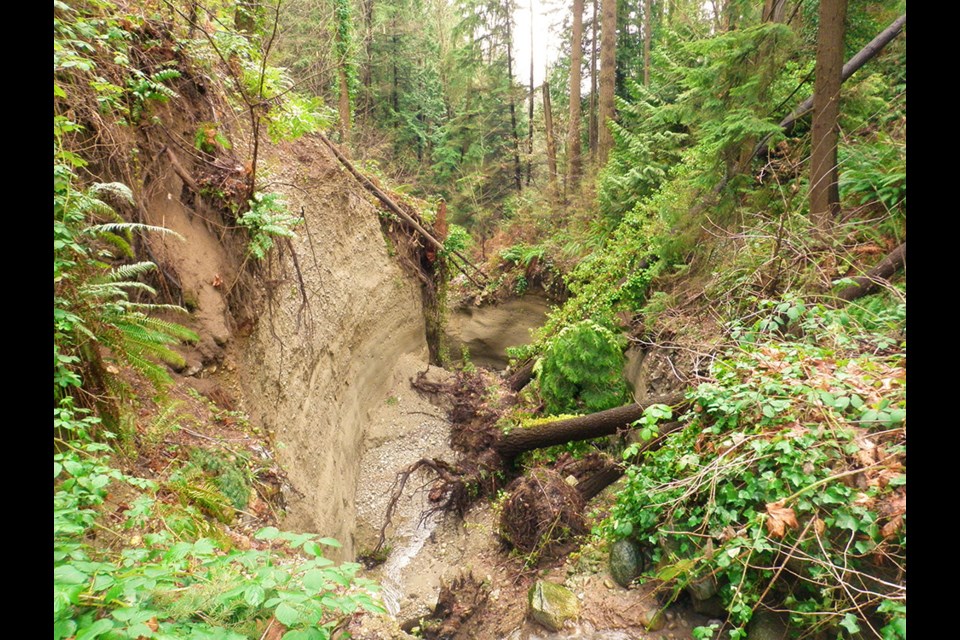The tame trickle of John Matthews Creek may look like the work of Mother Nature, but it's really the award-winning design of Associated Engineering.
The local firm was tasked with harnessing the rogue creek, which had started eroding its own banks, threatening to destabilize nearby homes.
The more dramatic developments occurred in 2012, according to the company's Michael MacLatchy. Thanks to heavy urban runoff, the creek cut through a layer of clay to the loose sand below. The rushing water carved a deep chasm, which left a 10-metre waterfall that was creeping farther upstream as the erosion worsened.
"Where we are standing now is where the 30-foot waterfall was," MacLatchy says at the streamside. "Our geotechnical engineer didn't even want us to walk through here."
Associated Engineering had to come up with a way to rework the creek to control the stormwater and stabilize the stream, while maintaining a natural look that the city wanted.
"They didn't want something that looked like a bunch of engineers built an armoured channel down the stream," MacLatchy says.
The firm designed a plan to divert the creek into a pipe, then build an extra pipe underground - a safety valve of sorts - to handle the heavy runoff events, which usually occur four times a year. It's not unusual to manage stormwater with diversion pipes, but they are typically used to direct the water away from its natural source, either down a road or through a sewer system. In this case, Associated Engineering found it was much more efficient to keep the line beneath the creek's natural path, till it was safe to daylight farther downhill in a bed of rocks that can take the pressure of the extra flow.
So once they pipe was laid underground, the creek was directed back in place and re-constructed, but not before adding a geosynthetic clay liner. The liner is typically used in landfills to handle underground seepage, but in this case, Associated Engineering wanted to keep the water from soaking into the ground.
The result is no net water loss, says Kel Coulson, the City of Burnaby engineer who oversaw the project.
"We haven't removed anything and put it into a sewer," she says. "It's fantastic."
While Associated Engineering led the design and construction phases for the project, a city-hired contractor handled the heavy labour, most of which was done in the winter of 2012. The project wrapped up in early 2013.
The creek still flows down a steep crevice, but what once looked like smooth, canyon walls is now a series of modified steps. The banks are lined with maple saplings, bleeding hearts, clumps of clover and blackberries. Felled trees cross the creek's path, and there are gnarled salvaged rootballs along the boulder-lined banks - all carefully arranged as part of the restoration work. Apart from the stream's regular steps, which seem a bit too perfectly arranged, the scene would pass as a work of nature.
"It's a crude approximation of what forms naturally over the years," MacLatchy says, among the bramble and skunk cabbage.
Associated Engineering's work caught the eye of the Consulting Engineering Companies B.C., which granted the firm an excellence award in the natural resource and habitat category. The awards ceremony was held earlier this month in Vancouver.
Thanks to the collaboration between city staff, Associated Engineering and the contractor, John Matthews Creek is now stable, and Mother Nature is filling in the springtime foliage.
"The materials should be good for 100 years," MacLatchy says.



